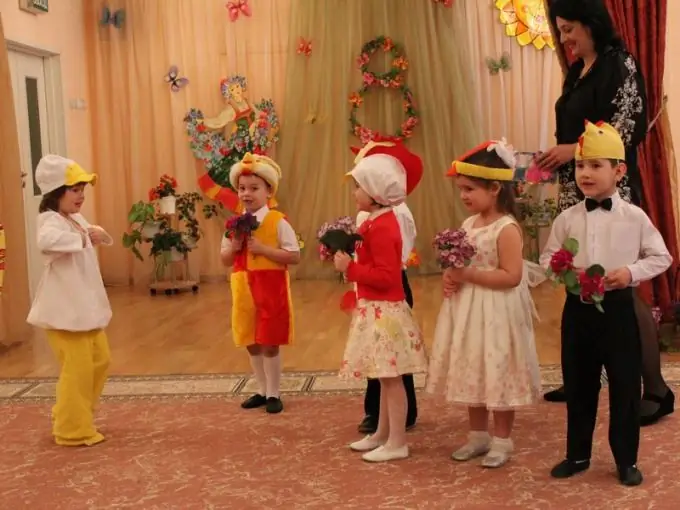- Author Caroline Forman [email protected].
- Public 2023-12-16 11:46.
- Last modified 2025-01-23 09:54.
To make the holiday memorable for a long time, stir up its guests by putting on a small scene. Well, if this is a kindergarten, school, student or corporate evening, you definitely cannot do without witty and topical scenes. Proud participants and grateful audience will discuss the most successful episodes and quote your jokes for a long time to come.

It is necessary
During the preparation of the scene, you should always have on hand writing materials, source materials (fairy tales, fables, magazines, photo and video materials, etc.), paints and brushes (or real makeup). If you are planning to stage a fancy-dress scene, make sure that all costumes are ready for the performance in advance. If you want to arrange a sketch competition in the spirit of KVN, prepare a screen for which you will need a canvas (or thick fabric) and a wooden base on hinges. And, accordingly, a hammer, nails, screws, paper clips or wallpaper nails
Instructions
Step 1
Write a script. Grab a pen, paper, or start working at your computer. Use ready-made materials (fairy tales, fables, poems, anecdotes, scenes and motives of famous films). Or come up with a scenario "from scratch" based on actual events in the life of a school, university, institution, family, yard, etc. In the script, it is important to take into account what holiday you are going to prepare the scene for, the characters of the characters and performers, the audience of the future performance.
Step 2
Think about who will be in the scene. Do not copy the characters of the main characters completely from your friends or colleagues: let the viewer puzzle a little over who or what you meant by this or that mask. But do not obscure the meaning: characters and situations must be sufficiently recognizable.
Step 3
Come up with jokes better together with other participants in the scene. When writing a scene, do not use those motives that may offend participants or spectators. Describe negative characters in a funny, but not repulsive way. Their speech and actions must at first be no less convincing than the words and actions of the goodies in order for at least some kind of intrigue to start.
Step 4
Describe in detail the mise-en-scène: who, where and when comes out, how the props will be placed in relation to the actors, what gestures, facial expressions, gait the actors should have.
Step 5
In advance, mark in the script those places that will consist entirely of improvisations of participants and spectators. Improvisation shouldn't be too difficult for the actors and the audience. Write (in advance) the words of a song or lines of poems that the audience will have to pronounce or a diagram of the viewer's approximate reactions to certain words or actions of the character addressed to him.
Step 6
If you want to use illustrative photo and video materials, as well as music and lighting effects in a scene, create a parallel scenario (for a sound or video director and a light source). Mark in this scenario after what words of this or that character and how long the music will sound or the video sequence is needed. Time the recordings. Of course, if your assembly hall or even a classroom has modern equipment, then all this will be enough to enter into the computer memory using special programs.
Step 7
Draw up a rough plan of rehearsals, taking into account the schedule of participants' busyness.






